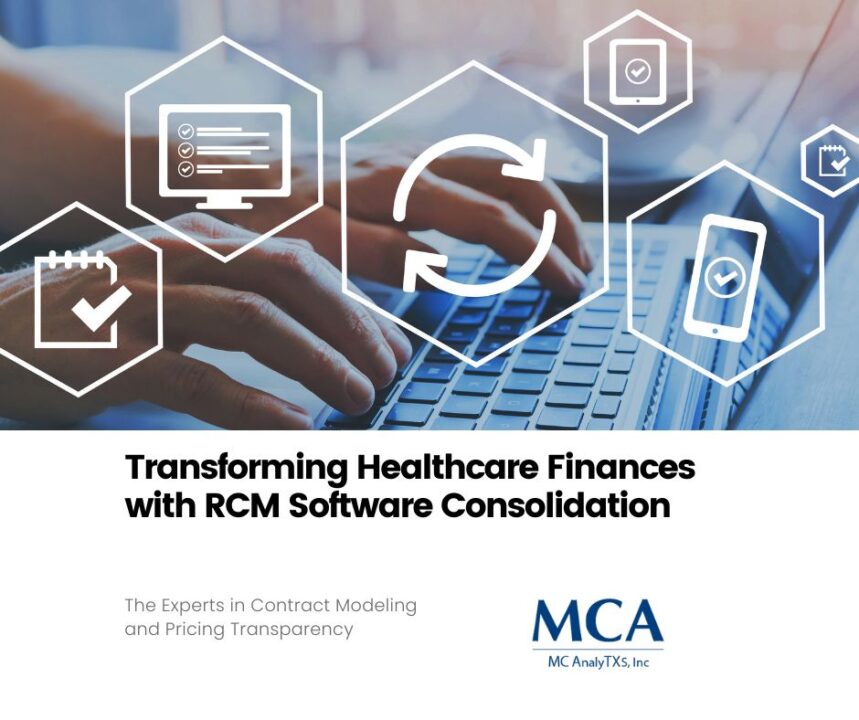
Why Revenue Cycle Tech is a Priority for 79% of Leaders
February 2, 2024
Reversing the Tide: A Proven Plan to Slash Your Denial Rates by 72%
February 7, 2024The financial health of healthcare providers pivots significantly on reducing underpayments and improving revenue streams. Underpayments, the notorious imbalance between the cost of services provided and the payment received, can severely dent a healthcare organization’s bottom line. Revenue cycle managers and healthcare providers are continually seeking robust strategies to mitigate these discrepancies and bolster their revenue integrity.
In this article, we’ll dive into a 9-point checklist that is tailored to not just identify the root causes of underpayments but also to enhance overarchingly the financial outcomes for your healthcare practice or organization.
1. Understand Payer Contracts
Contracts with insurance companies are intricate, and they are the cornerstone of your revenue cycle. An in-depth understanding of payer contracts is critical as these documents lay out the payment rates and rules for services. Misinterpretation can lead to systemic underpayments.
Review agreements annually for any changes.
Invest time in training your staff to interpret and apply contract terms accurately.
2. Implement Robust Coding Practices
Accurate coding is non-negotiable. With an ever-evolving landscape of codes and regulations, healthcare providers must ensure their coding practices are up-to-date to capture the full extent of services provided.
Leverage professional coders and ongoing education opportunities.
Utilize coding software that’s compliant with the latest regulations.
3. Verify Patient Insurance Coverage
Verifying insurance eligibility before services are rendered is a proactive step to avoid underpayments. Misunderstandings regarding a patient’s coverage can result in unpaid claims.
Institute a process to verify coverage before every appointment.
Educate patients about their coverage to reconcile expectations and actual coverage.
4. Streamline Claims Submission Process
A streamlined, error-free claims submission process is paramount. Even minor errors can delay or derail payments.
Implement electronic health records (EHR) and billing systems to minimize manual entry.
Routinely update these systems to comply with the latest payer submission requirements.
5. Conduct Regular Claims Audits
It’s crucial to understand where and why underpayments happen – which makes claims audits invaluable.
Schedule periodic audits to check for completeness and accuracy in coding and billing.
Investigate denied or underpaid claims to avoid those issues in the future.
6. Address Denials Management
Denials are a direct blow to your revenue. Effectively managing and appealing denied claims is essential.
Create a dedicated team to handle denials efficiently.
Analyze patterns in denials to prevent them in the future.
7. Employ Patient Financial Responsibility Estimation
Providing patients with an accurate estimation of their financial responsibility can improve collections.
Use technology to estimate patient liabilities upfront.
Communicate clearly with patients to ensure they understand their financial obligations.
8. Optimize Payment Posting
Accurate payment posting allows for better management of patient accounts and helps highlight underpayments.
Ensure your staff is well-trained in posting and adjusting payments.
Reconcile payments posted with the amount expected from payer contracts.
9. Engage in Continuous Staff Training and Education
The healthcare industry is always evolving, and so are the processes and technologies used in managing revenue.
Invest in continuous training for your staff to keep them abreast of current trends and processes.
Develop a culture of excellence and accountability in managing revenue.
Conclusion
Adherence to this checklist requires an ongoing commitment and willingness to adapt to change, but it can transform revenue management in a healthcare setup. Every point in this list is an opportunity to close loopholes that lead to underpayments and simultaneously empower your workforce to contribute effectively to your organization’s revenue enhancement strategies.
By implementing these robust checks and balances and examining the core processes in your revenue cycle, you can navigate your organization toward improved financial stability and patient service. Remember, the goal is an optimal revenue cycle management that serves patients well and safeguards your practice’s financial vitality.
To learn more join our upcoming webinar on Thursday, Feb. 22nd at 1 pm CST.





